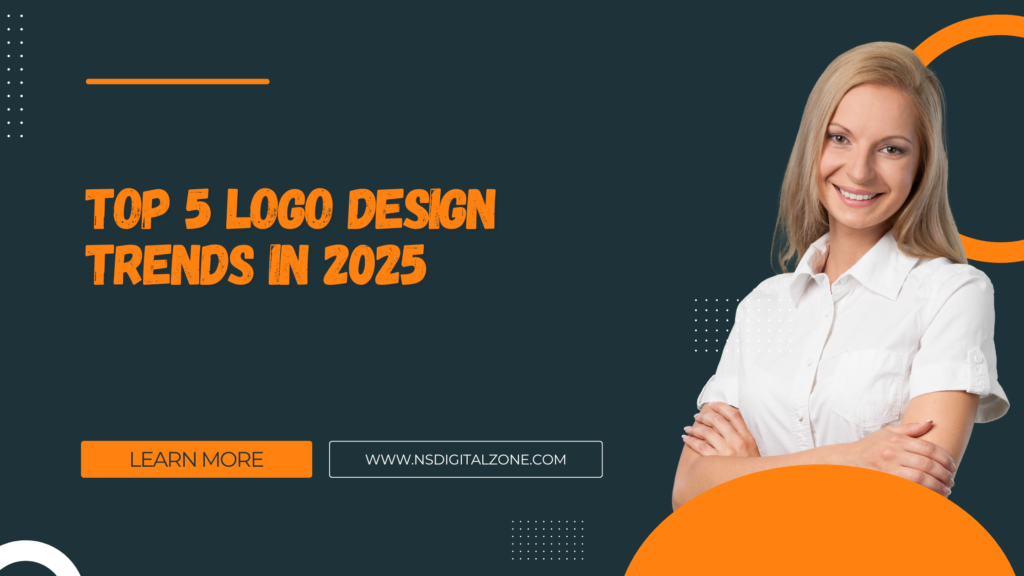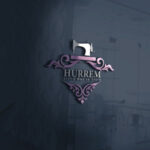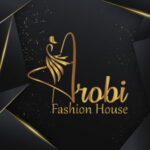As we move further into the digital age, the role of design continues to evolve, and logo design is no exception. By 2025, the expectations surrounding logos are set to change, as businesses increasingly prioritize authenticity, simplicity, and engagement with modern technology. Designers are pushing the boundaries of creativity while responding to changing consumer behaviors and technological advancements. As a result, businesses need to stay ahead of the curve in order to maintain a competitive edge. The logo is not only a company’s first impression—it’s a symbol that communicates the brand’s values, culture, and mission. In 2025, logos will need to be more adaptive, dynamic, and versatile, encompassing trends that speak to the digital age while also remaining timeless. So, what are the top logo design trends to watch for in 2025?
1. Minimalism with Purposeful Detail
Minimalism continues to be a dominant trend in logo design, and it’s only expected to grow in 2025. Simple, clean logos that strip away unnecessary details have become synonymous with modern branding. The rationale behind this trend is clear: in a world where consumers are constantly bombarded with information, simplicity allows a logo to stand out without overwhelming the viewer. In fact, minimal logos are easier to remember and more versatile across different platforms and mediums.

However, minimalism in 2025 isn’t about stripping away all complexity—it’s about creating designs that convey depth through subtlety. Designers will focus on incorporating meaningful, purposeful details that enhance the logo’s message without cluttering it. This trend reflects the shift toward logos that aren’t just minimal for the sake of simplicity, but that have a story or philosophy embedded in their design. Think of a logo that uses negative space or plays with line thickness and shape to add layers of meaning. For example, a logo might seem straightforward at first glance, but upon closer inspection, subtle design elements—like a hidden icon, a clever use of typography, or a dynamic shape—reveal a deeper narrative.
As we approach 2025, logos that combine minimalism with nuanced details will make a lasting impression, striking the perfect balance between simplicity and sophistication.
2. Retro and Nostalgic Design
Retro aesthetics have made a major comeback over the past few years, and by 2025, we can expect this trend to reach new heights in logo design. Nostalgia has always been a powerful force in marketing and design, but as digital experiences continue to dominate our daily lives, people are becoming more drawn to vintage and throwback elements that evoke fond memories of simpler times. Logos that incorporate retro fonts, color schemes, and design elements from the ’80s, ’90s, and early 2000s will be more popular than ever.
This trend is all about tapping into emotions and creating a sense of familiarity. Retro logos have a way of making consumers feel connected to a time or place, evoking warmth and trust. But in 2025, retro doesn’t necessarily mean an exact reproduction of past styles; instead, it’s about infusing vintage design with a modern twist. For example, a brand might use a classic ‘70s color palette but pair it with sleek, contemporary typography. Or, a logo might incorporate elements of retro art and design while keeping the overall aesthetic fresh and forward-thinking.
This nostalgic revival can also be seen in the use of older styles of illustration, shapes, or graphic treatments that are updated with cleaner lines and more polished finishes. As we look ahead, retro logos will continue to draw on history while evolving to reflect the present and future.
3. Animated and Dynamic Logos
The growth of digital media and interactive technology has brought a shift toward logos that are more than just static images—they’re evolving into animated and dynamic visual experiences. By 2025, businesses will increasingly use motion graphics, GIFs, and even 3D animation to bring logos to life, creating a more engaging and immersive experience for audiences. Animated logos can evoke a sense of playfulness, creativity, and cutting-edge technology, all while enhancing brand identity.
These dynamic logos will be especially popular in the digital space, where movement captures attention and stands out more than traditional static designs. Whether it’s a subtle animation on a website, a logo that transitions in real-time on social media platforms, or a full-blown interactive experience, brands will look for ways to incorporate movement into their logos to create a deeper emotional connection with their audience.
A prime example of this trend could be a logo that subtly changes its form as users interact with it—such as a brandmark that shifts colors or evolves based on the user’s actions or location. As brands move toward an increasingly interactive online presence, logos will become more flexible and fluid, able to adapt and evolve in response to their environment.
Incorporating animation into a logo doesn’t just make it more eye-catching—it also allows brands to tell a story or convey a sense of innovation. Dynamic logos will become a key tool for companies looking to push the boundaries of creativity in 2025.
4. Sustainability-Focused and Earth-Inspired Designs
As consumers become more eco-conscious and businesses embrace sustainability, logos will increasingly reflect the need for environmental responsibility. Sustainability is no longer a niche trend; it has become a core value for many brands. By 2025, logos will feature earth-inspired designs, such as natural color palettes, organic shapes, and imagery that represents the planet, like leaves, mountains, and water. These logos will be crafted to symbolize environmental stewardship and eco-friendly practices, signaling a company’s commitment to sustainability.
Sustainable logos go beyond just visual appeal—they also align with a brand’s overall mission to reduce environmental impact. For example, some logos might incorporate green color schemes or minimalist designs that focus on recycling or renewable resources. Others may use shapes that are associated with nature, such as circles representing the Earth or leaves to symbolize growth and renewal. This trend speaks to a broader movement in design and marketing: the need for businesses to align themselves with social and environmental causes.
As the world moves toward more conscious consumerism, logos will need to reflect these values to attract eco-aware audiences. The visual representation of a brand’s commitment to sustainability will be crucial for building trust and loyalty with consumers who value transparency and responsible business practices.
5. Custom Typography and Hand-Drawn Logos
Typography has always been a crucial component of logo design, but in 2025, we’ll see even more emphasis on custom fonts and hand-drawn designs. As businesses look to differentiate themselves in a saturated marketplace, unique typography is an excellent way to stand out. In an era where every brand is looking for ways to establish its individuality, custom typefaces and hand-crafted logos can create a more personalized and authentic connection with audiences.
Hand-drawn logos, in particular, are becoming increasingly popular because they add a touch of humanity and originality. Unlike mass-produced fonts or generic designs, hand-drawn logos feel organic, personal, and genuine. This kind of design offers a unique artistic touch that can convey a brand’s personality and creativity, helping it resonate with customers on a deeper level.
In addition to hand-drawn elements, brands will also focus on developing custom typography that aligns perfectly with their brand identity. Whether it’s a bespoke letterform that speaks to the company’s culture or a typeface that’s entirely unique to the business, typography will continue to evolve as a central design element. In 2025, the most memorable logos will be those that incorporate custom or hand-drawn typography that is as unique as the brand itself.
Conclusion
The logo design trends of 2025 will reflect an ongoing shift toward simplicity, authenticity, and interaction. Businesses are embracing minimalist designs, nostalgic references, and animated logos, while also integrating sustainable and eco-conscious elements. The focus will be on creating logos that connect with audiences on a deeper, more personal level—whether through dynamic motion, custom typography, or a clear commitment to environmental responsibility. These trends aren’t just about following design fads; they are about responding to a rapidly changing digital landscape and meeting the expectations of modern consumers. A great logo in 2025 will be one that is adaptable, purposeful, and able to create an emotional connection with its audience. As brands continue to innovate, so too will the logos that represent them, making 2025 an exciting year for the future of design.











